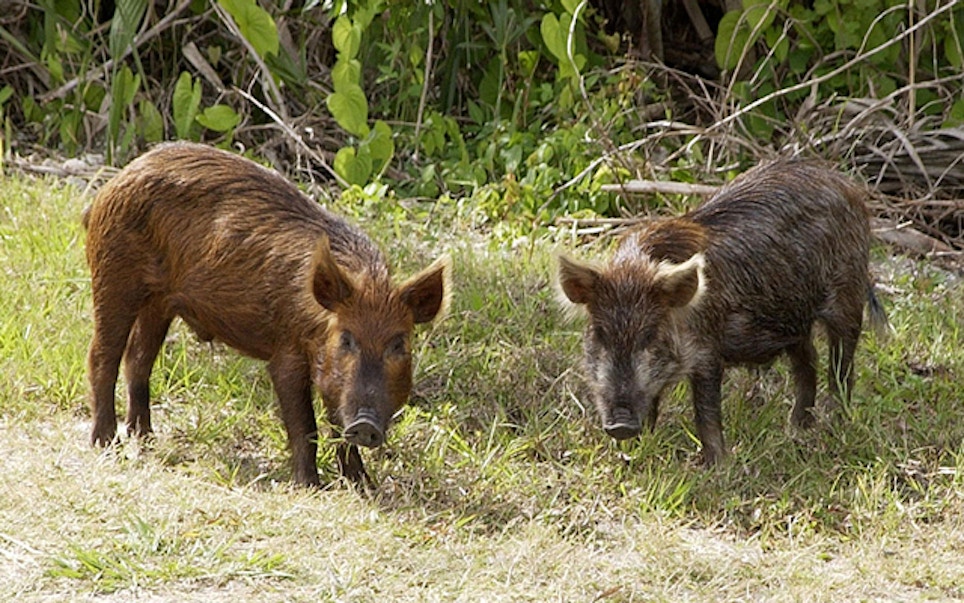This should be fairly easy, I thought, as I cut off the hog's tail and checked for ticks.
The tail was long and black, with a tuft of coarse hair on the end. Typical tail from an old boar hog. Unlike the curled tails on Porky Pig or other cartoon characters, usually have straight tails that swish.
This one, I thought, might look good attached to a walking stick. I could be like Rafiki from The Lion King, toodling around with my cedar walking stick I'd cleaned and whittled smooth before adding a swishing boar's tail.
The tale of the tail doesn't end well, though.
I'm pretty sure this was from a hunt in South Carolina back in the mid 2000s. I was on a work trip for the newspaper I worked for and called a friend to see if he might have a spot for a hunt. Of course, he said, and we headed to an old hunting camp near a swamp replete with hand-hewn slab floors and walls and dripping with hospitality and history.
Pat handed me a bolt-action .270 and a box of cartridges. Our host said "kill every one that you can," which was music to my ears. Only one showed in the food plot, though. After watching it for a while to see if any others showed, I knocked it over with a pop from the .270 and watched it kick a time or two. A bang-flop is a good thing.
The tail made it home in a plastic resealable back, packed in luggage for the short flight. Once there I shook it out well, brushed it and checked for more ticks or anything, and laid it in a double-folded sheet of heavy aluminum foil.
Bring on the salt!
Mind you, I'm not a taxidermist. My redneck was showing. I poured on the salt covering the base of the tail where I'd cut it from the body and then the entire tail. I closed the foil, carefully flipped it and covered the other side in salt. Voila! Fully covered in salt, wrapped and closed securely in foil and placed inside an open, gallon-sized resealable bag, surely it wouldn't take long to achieve results.
What results? For some reason I was thinking the salt would remove the moisture and I'd end up with something like a shrunken head. The first part is true. Salt removes moisture. But it doesn't automatically create a shrunken head, or dried tail.
After four or five days, I removed the tail, discarded the salt and repeated the salting process. The salt worked to help withdraw the minimal blood and fluid from the tail.
About a week later, my loving, understanding, non-hunting but she puts up with me wife said, "What is that odor in the garage? Did something die?" I must've been nose blind. Or I was just ignoring it.
Might be a mouse, I said. I'll check.
Let's just say that a wild boar's tail coated in salt doesn't yield the results I thought it would. Fortunately, I had the foresight to put the foil-wrapped tail in the large resealable bag. Whatever fluid was leaking from the foil stayed in the bag.
I sealed it and tossed it in the garbage bin, opened the garage door and turned on a fan. Crisis averted.
Lesson learned, too: I'm better at thumping hogs than taxidermy.






